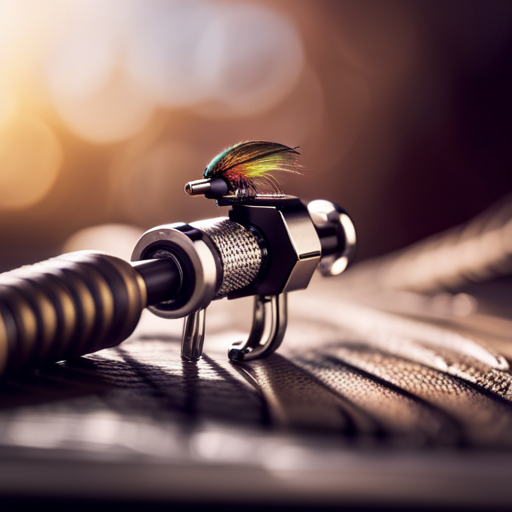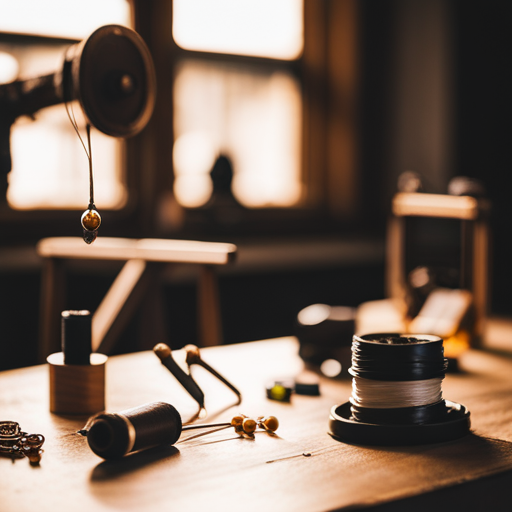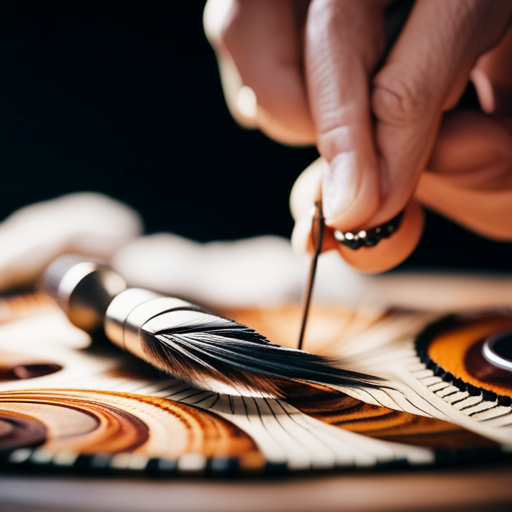In the art of fly tying, precision is not merely a desirable quality, but an indispensable element that separates the average from the exceptional. Every meticulous turn of the thread and careful selection of materials contributes to the creation of a lifelike imitation that can entice even the most discerning of fish.
This article delves into the historical significance, essential tools, and advanced techniques that underscore the paramount importance of precision in the craft of fly tying.
History of Fly Tying
The evolution of fly tying has played a pivotal role in the development of angling techniques. Fly tying dates back to ancient times, with evidence of artificial flies being used in Macedonia as early as the 2nd century. Over the centuries, the techniques and materials used in fly tying have evolved significantly, driven by the need to imitate different insect species and baitfish, as well as the cultural significance of angling in various societies.
In the early days, natural materials such as feathers, fur, and silk were used to create flies, and the patterns were often simple. However, as angling gained prominence in different cultures, the evolution of techniques and materials used in fly tying became more sophisticated. This evolution not only reflected the changing understanding of entomology and fish behavior but also the cultural significance of angling as a leisure activity and, in some cases, as a means of sustenance.
Understanding the history of fly tying provides anglers with valuable insights into the development of different fly patterns and techniques, allowing them to appreciate the rich heritage of this art form while also improving their angling skills.
Essential Tools and Materials
When starting fly tying, one must ensure they have the essential tools and materials to create precise and effective fly patterns. The proper tools and materials are crucial for achieving the desired results. Here is a table outlining the essential tools and materials for fly tying:
| Tools | Materials |
|---|---|
| Vise | Hooks |
| Bobbin | Thread |
| Scissors | Feathers |
| Hackle Pliers | Tinsel |
These tools are fundamental for the various techniques used in fly tying. For instance, the vise is essential for holding the hook securely in place while the thread is being wrapped around it. The bobbin allows for efficient and uniform wrapping of the thread, while scissors are used to trim materials to the desired proportions. Feathers and tinsel, among other materials, are crucial for achieving the right balance and proportions in the fly pattern. Understanding the importance of these tools and materials, as well as their proper use and proportions, is key to creating effective and precise fly patterns.
Techniques for Precision
To achieve precision in fly tying, mastering the techniques for handling and manipulating materials is paramount. Attention to detail and the use of proper techniques can greatly enhance the quality of the flies being tied. Here are four essential techniques for achieving precision in fly tying:
-
Thread Control: Proper control and manipulation of the tying thread are crucial for achieving precision. Tension and wrapping techniques are essential for securing materials and creating neat, durable fly patterns. Understanding how to use the thread to build a solid foundation is key to the overall quality of the fly.
-
Material Selection: Choosing the right materials and handling them with care is fundamental for achieving precision. Understanding the characteristics of different materials and how they behave when manipulated is essential for creating well-proportioned and balanced flies.
-
Hook Size: Selecting the appropriate hook size for a specific fly pattern is critical for achieving precision. Matching the hook size to the intended fly design is essential for creating aesthetically pleasing and functional flies.
-
Tension Adjustment: Proper tension adjustment while tying is crucial for achieving precision. Knowing when to apply more or less tension to the thread can greatly impact the overall appearance and durability of the fly. Mastering tension adjustment is key to achieving consistent and precise fly patterns.
Matching Natural Insects
Matching natural insects is essential for creating realistic and effective fly patterns that accurately mimic the appearance and behavior of their natural counterparts.
When imitating behavior, it’s crucial to consider the specific movements and habits of the targeted insect species. For instance, if the natural insect skitters or darts on the water’s surface, the fly pattern should be designed to replicate this behavior.
Visual deception is also a key aspect to consider when matching natural insects. This involves understanding the color, size, and silhouette of the insect being imitated. Careful observation of the insect’s natural habitat and behavior can provide valuable insights into its visual characteristics. By incorporating these details into the fly pattern, fly tyers can create imitations that are more likely to deceive fish.
Additionally, factors such as the materials used and the proportions of the fly pattern play a significant role in achieving a convincing match to the natural insect. Therefore, attention to these details is essential for creating fly patterns that effectively imitate the appearance and behavior of natural insects.
Importance of Proportions
When it comes to fly tying, the importance of proportions cannot be overstated. The proportions of a fly directly impact its ability to mimic natural insects and ultimately affect its effectiveness in attracting fish.
Realistic flies with accurate proportions can significantly improve the fly’s behavior in the water, increasing the chances of a successful catch.
Proportions for Realistic Flies
Achieving precise proportions is essential for creating realistic flies that accurately mimic the appearance of natural insects. When striving for realistic proportions in fly tying, it is crucial to consider the following:
-
Body Length: The length of the fly’s body should be proportional to the size of the natural insect it imitates. This can be achieved by carefully measuring and cutting the materials to the appropriate length.
-
Wing Size: The wings should be in proportion to the body, mimicking the natural insect’s wing size. Utilizing precise techniques for wing placement is essential for achieving realistic proportions.
-
Leg Length: The length of the legs should be accurate in relation to the body size, contributing to the overall lifelike appearance of the fly.
-
Head Size: The size of the head should be proportionate to the body, adding to the overall aesthetic appeal and realism of the fly.
These proportions are crucial for creating flies that closely resemble natural insects, enhancing their effectiveness in imitating real prey and ultimately influencing the fly’s behavior in the water.
Impact on Fly’s Behavior
Precision in the proportions of a fly directly influences its behavior, making it crucial for accurately imitating the natural prey and attracting fish.
When fly design incorporates precise proportions, it enhances the fly’s ability to mimic the behavior of real insects or baitfish. This, in turn, increases the fly’s effectiveness in enticing fish to strike.
Flies with accurate proportions in their patterns exhibit lifelike movements, such as realistic swimming or fluttering actions, which are essential in triggering a fish’s predatory instincts. Furthermore, precise proportions ensure that the fly maintains proper balance and buoyancy, allowing it to move naturally in the water.
Ultimately, the impact on the fly’s behavior due to precision in proportions cannot be overstated, as it significantly influences its ability to deceive and entice fish, making it a fundamental aspect of successful fly tying.
Impact on Fly Fishing Success
The precision of fly tying significantly influences the success of fly fishing. A well-tied fly can make the difference between a successful catch and a fruitless day on the water. Here are four key ways in which precision in fly tying impacts fly fishing success:
-
Fly Presentation: Precisely tied flies mimic natural insect behavior, increasing the likelihood of enticing fish to strike. The accuracy in replicating the size, shape, and color of natural prey is crucial in attracting fish.
-
Fish Behavior: Fish are more likely to respond positively to a precisely tied fly that accurately imitates their natural food sources. This can lead to increased strikes and successful hookups.
-
Fly Design: The precision in fly tying allows for the creation of durable and lifelike flies that can withstand the rigors of casting and the attention of fish. A well-designed fly can endure multiple strikes, increasing the chances of landing a fish.
-
Angler Skill: A precisely tied fly can compensate for any shortcomings in an angler’s casting or presentation skills, increasing the chances of a successful catch even in challenging conditions.
Advancements in Fly Tying Technology
Advancements in fly tying technology have revolutionized the precision with which flies can be crafted, enhancing the ability to replicate natural insect behavior and improve fish response rates. Fly tying innovations have led to the development of advanced tools and techniques that enable fly tyers to create more realistic and durable flies, ultimately benefiting fly fishermen. These advancements have significantly improved the overall quality and effectiveness of artificial flies, leading to increased success on the water.
| Precision Tools | Benefits | Techniques |
|---|---|---|
| Rotary Vises | Allows for 360-degree rotation, facilitating precise thread placement and material application. | Enables seamless construction of intricate fly patterns. |
| UV Resins | Provides quick and durable curing, resulting in stronger and more lifelike fly bodies. | Enhances the durability and realism of fly patterns, increasing their effectiveness in enticing fish. |
| Laser-cutting Technology | Enables the production of intricate and precise fly tying materials with consistent quality. | Allows for the creation of lifelike wings, bodies, and other components, improving the overall realism of artificial flies. |
| Advanced Bobbin Holders | Offers better thread control and tension, allowing for more precise and consistent thread wraps. | Facilitates the creation of neat and durable fly bodies, improving the overall quality of artificial flies. |
These precision tools and techniques have significantly elevated the art of fly tying, providing anglers with flies that closely mimic natural insects and ultimately enhancing their success on the water.
Frequently Asked Questions
Can Fly Tying Be Considered an Art Form?
Fly tying can be considered an art form as it involves intricate artistic expression and a creative process. Precision impacts the success of insect mimicry. Technological advancements have enhanced the art, making it a blend of tradition and innovation.
How Does the Precision of Fly Tying Techniques Impact the Behavior of Fish?
The precision of fly tying techniques directly impacts fishing success. By carefully selecting and positioning materials, such as feathers and fur, the fly can mimic natural prey, enticing fish to strike, ultimately leading to improved catch rates.
Are There Specific Types of Insects That Are More Challenging to Match With Precision in Fly Tying?
Certain types of insects, such as midges or tiny mayflies, pose challenges in matching precision in fly tying due to their delicate features and small size. Precision in replicating these insects is crucial for influencing fish behavior.
How Has Technology Changed the Way Fly Tying Is Done in Recent Years?
Technology has significantly impacted fly tying in recent years. Automation has streamlined the process, reducing manual labor. Virtual reality tutorials have enhanced learning, offering immersive, interactive experiences. These advancements have made fly tying more efficient and accessible to a wider audience.
What Are Some Common Mistakes That Beginners Make When Trying to Achieve Precision in Fly Tying?
When beginners aim for precision in fly tying, common mistakes include improper thread tension, inaccurate proportions, and sloppy finishing. Understanding these beginner techniques is crucial to achieving precision, which directly impacts fly behavior.
Conclusion
In conclusion, the precision in fly tying is of utmost importance for achieving success in fly fishing.
By utilizing essential tools, materials, and techniques, fly tyers can ensure that their flies accurately match natural insects, leading to increased fishing success.
The impact of proportions cannot be underestimated, and advancements in fly tying technology have further enhanced the precision and effectiveness of fly patterns.
Ultimately, the attention to precision in fly tying is crucial for achieving optimal results in fly fishing.




